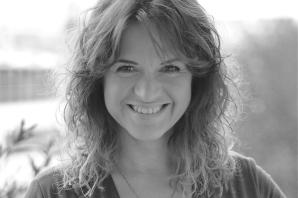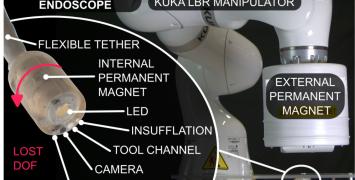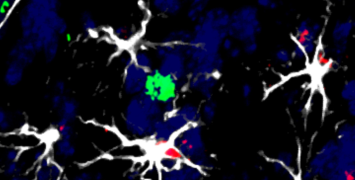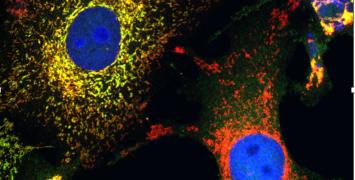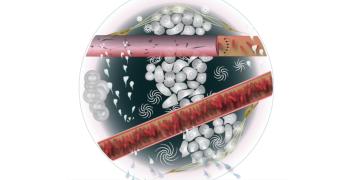The driving forces of cell division
With her ERC grant, the 5000th awarded to a leading scientist in Europe, Dr Iva Tolić wants to push forward the frontiers of knowledge on the mechanical principles of cell division. To reach her goal, after spending several years in the USA, Denmark, Italy and Germany, she has moved back to Croatia where she is setting her new research team. The results of her ERC-funded project could lead to new insight in cell and molecular biology, potentially opening novel ways to treat cancer.
Image: Microtubules in action during chromosome division © Iva Tolić
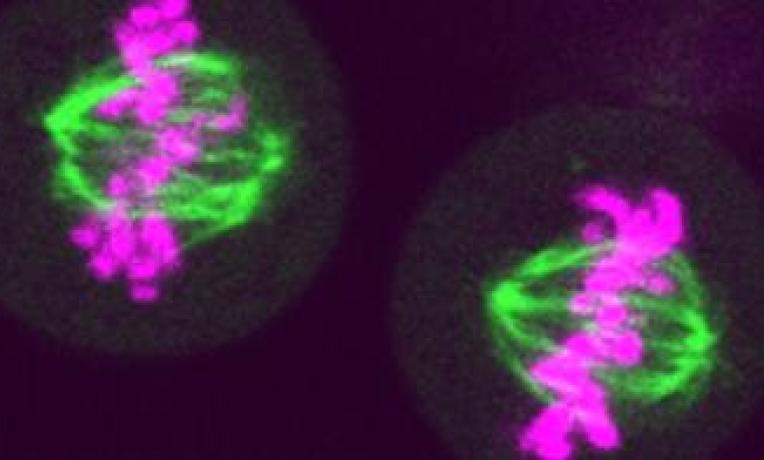
The basics of life
Cell division is a core process for life. Our body is constantly producing new cells to replace old or damaged ones, at the rate of millions per second. What is more, inside cells, there are forces, motor engines, and plenty of movement. Cells need these inner energies to duplicate.
"Understanding the mechanical principles of cell division is thrilling and extremely important. Actually, it is this process that makes life possible at all”, explains Dr Iva Tolić, who recently moved to the Ruđer Bošković Institute in Zagreb. "My ambition is to clearly identify the principles and rules of self-organisation inside a cell. I am particularly interested in the functioning of the mitotic spindle, which in my opinion is the most fascinating structure in all living creatures", says Dr Tolić.
Well-orchestrated forces
During cell division, chromosomes are replicated, the cell separates in two and an identical set of chromosomes is inherited by each daughter cell. For this to happen, fibrous rods called microtubules play a decisive role. They are in charge of aligning the chromosomes and, eventually, of separating them with the highest precision. The task of these highly dynamic microtubules is to pull the chromosomes back and forth until they are attached to a spindle structure. Chromosomes are then dragged to the opposite sides of the cell before the cell actually splits. We know that microtubules interact with each other and with kinetochores (protein structures in charge of controlling the movements of chromosomes during cell division) but these interactions have not yet been elucidated.
"The main question is: how do microtubules pull the chromosomes and split them apart while the cell divides? The current hypothesis is that the kinetochore fibres are the only structures that exert force on the chromosomes as they attach to them from opposite sides. However, we have uncovered a specific class of microtubules that connect the kinetochores like bridges and that also exercise significant force on the chromosomes", explains Dr Iva Tolić.
To elucidate how these bridging microtubules could drive the movements of sister kinetochores and therefore, play a key role in chromosome segregation, Dr Tolić combines a variety of experimental techniques and theory, including molecular biology, imaging, optical engineering, computer science and theoretical physics. This comprehensive interdisciplinary approach could lead to a better understanding on how the millions molecules and organelles that can be found in a living cell interact with each other, so as to make a meaningful and functional unit.
Moreover, the results of her ERC-funded project could be critical for the development of new therapies against cancer, as this disease results from a cell duplication process that, for some reason, is not regulated correctly.
"Back where all started"
Dr Iva Tolić started her career at the Ruđer Bošković Institute (RBI) in Zagreb, Croatia, where she obtained her PhD in Biology. Between 1999 and 2001 she did a PhD work in Harvard School of Public Health, in the USA. She also did consecutive post-docs in Denmark and Italy following her desire to master laser techniques for cutting inside cells. Between 2005 and 2015, Dr Tolić was Research Group Leader at the Max Planck Institute of Molecular Cell Biology and Genetics in Dresden, Germany.
With her ERC Consolidator Grant, she decided to move back to Croatia: "I applied for an ERC grant because it is the best and the biggest research grant for basic science in Europe. Thanks to this funding, I am now able to buy state-of-the-art equipment for my lab and to set my own new research team in Croatia, back where all started".

